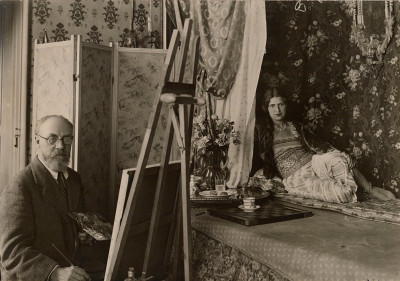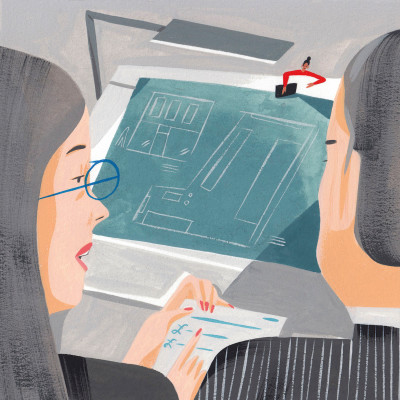Inside Joseph Cornell’s studio
Inside Joseph Cornell’s studio
By Sarah Lea
Published 25 August 2015
Packed full with “sketchboxes” and folders, carefully arranged in his own unique filing system, Joseph Cornell’s studio was like a laboratory for his art experiments. The curator of our show takes us inside.
-
-

Cornell never left the United States and hardly ventured beyond New York City, yet through collecting he travelled freely to foreign places and distant times. A life-long autodidact, his remarkable archive eventually numbered tens of thousands of found objects, pieces of paper ephemera and diary entries, thousands of books and magazines and hundreds of music records and films.
In 1941 Cornell organised the cellar of his Utopia Parkway home in Queen, New York, as a studio, with a small window looking out onto ground-level, a workbench, table and shelves that eventually accrued a range of whitewashed containers – shoeboxes, biscuit tins – labelled with scrawled handwriting, usually in midnight-blue paint.
Cornell sometimes referred to his studio as a “laboratory” and the notion of experiment underpins his working methods, which have an empirical, trial-and-error quality. However, despite his reverence for science, Cornell also believed that reason had its limits and his modus operandi when making was an intuitive one. His classification system marries the practical with the imaginative; distinctions of similarity and difference are drawn, but the tiered structures of scientific taxonomy are absent. Indeed, works of this period confirm Cornell’s self-conscious play with the rational language of museums.
-
-
-

Most objects were stored straightforwardly by type and material: “sea-shells”, “Tin Foil”, “Balls/Cork”, “marbles old fashioned”, “stamps (non-official)”, while stocks of prefabricated elements such as “Owl Cutouts” offered ready options.
-

The categories of Cornell’s numerous manila folders of printed matter range from clear iconographic subjects such as “Castles” or themes such as “Astronomy” to people, including diverse images Cornell associated with their personas. This one is stuffed full of Cornell’s stamps.
-

Other boxes with evocative labels such as “Nostalgia of the Sea” and “L’Humeur Vagabonde” contain the seeds of ideas in the form of grouped objects. This one is “Winged Insects Butterfly”.
-
-
-

Likewise, folders with conceptual groupings reveal evolving subjective sets that share an identity in Cornell’s mind: “Celestial Theater”, “Museum without Walls”, “Childhood Regained”, “Center of a Labyrinth”. Cornell termed these dossiers “explorations” and described the building of files as “imaginative pictorial research akin to the image-making of poetry”; some grew to constitute artworks in themselves.
-

Cornell thought of these working materials as “sketchboxes” that performed a function comparable to preparatory drawings and studies. He enthused over “the prospect of cluttered cellar – / creative filing / creative arranging / as poetics / as technique / as joyous creation.”
-

Sorting or locating images, or finding homes for the day’s gleanings in the mild chaos of the shelves augmented the chance connections that Cornell craved. It was these that led him to create his celebrated glass-fronted shadow boxes – each standing as a window into the powerful wanderlust of an inexhaustibly curious mind.
-
-
This is an extract from the catalogue essay Joseph Cornell: Wanderlust by curator Sarah Lea. Buy the catalogue online.










